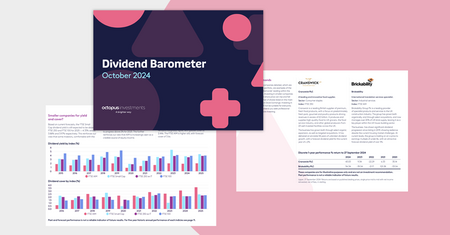GuideBusiness Relief
Business Relief frequently asked questions
We get a lot of questions about Business Relief, so we’ve answered the ones we get asked the most. Please get in touch if you can’t find the answer you’re looking for.
First up, what is Business Relief?
Business Relief (previously called Business Property Relief or BPR) is a tax relief offered by the government that allows business assets to be left to beneficiaries free from inheritance when someone passes away. It’s available to business owners who pass on their company to their heirs, and to people who have shares in Business Relief qualifying companies.
What is the two-year rule for Business Relief?
To qualify for Business Relief, shares in a business must have been owned for at least two years and must still be held at the time of death.
What qualifies for Business Relief?
Business Relief is available for certain UK trading businesses that meet the qualifying criteria. Many privately owned companies, sole trader businesses, and limited liability partnerships will qualify for Business Relief. Assets that might qualify include:
- Shares in an unlisted company.
- Shares listed on the Alternative Investment Market (AIM).
- Ownership of a family business.
What doesn’t qualify for Business Relief?
To qualify for Business Relief, a business must not be listed on a main stock exchange. It must also not deal in securities, stocks and shares, investments, property letting, land, or buildings.
Why does Business Relief exist?
When it was introduced in the 1976 Finance Act, the main aim of Business Relief (previously called Business Property Relief or BPR) was to ensure that family-owned businesses could continue trading when the owner died, without having to be sold by the family to pay inheritance tax. The value of keeping businesses running is that it’s good for the economy, and the government continues to earn company taxes and income tax from people who work there. Over time, successive governments have recognised the value of encouraging people to invest in trading businesses, whether or not they run the business themselves. It’s a good way to support grassroot businesses in the UK, which are vital for the economy and innovation.
What are the benefits of making a Business Relief qualifying investment?
The benefits of making an investment in a Business Relief qualifying company are:
- Faster inheritance tax exemption. Whereas making a gift or putting assets in trust takes seven years to become exempt from inheritance tax, shares in a Business Relief qualifying company or investment become exempt from inheritance tax after being held for just two years, provided the shares are still held at the time of death.
- Greater access and control. Unlike with a gift, an investor retains control over their Business Relief qualifying investment and can request to sell the investment and get the proceeds back if they need to. However, shares sold or money taken out of the investment will no longer be exempt from inheritance tax. And it’s important to note that there’s no guarantee you’ll be able to sell shares and get your money back.
- Simplicity. Buying shares or an investment in Business Relief-qualifying companies is relatively simple, compared to setting up a trust or using life insurance. There are no complex legal structures, and there should be no requirement for underwriting or medical questionnaires.
- Potential investment return. Hopefully the value of an investment will grow over the long term.
- Pass more wealth on. More wealth can be passed on to your family, as they will pay less inheritance tax on your estate when you die.
- Supports UK economy. Money is put to work in the UK, benefitting the economy and creating jobs.
What are the risks of Business Relief?
Business Relief qualifying investments are considered high risk and relief from inheritance tax is available to compensate for some of the additional risks involved. These risks include:
- Capital is at risk. The value of a Business Relief-qualifying investment, and any income from it, can fall, potentially to nil, as well as rise. Investors may not get back the full amount they invest.
- Tax treatment. Tax treatment depends on your personal circumstances and tax legislation may change in the future.
- Qualifying status. Tax relief depends on portfolio companies maintaining their qualifying status.
- The investment may be volatile and difficult to sell. The shares of unquoted and AIM-listed companies could fall or rise in value more than shares listed on the main market of the London Stock Exchange. They may also be harder to sell.
- High Risk Investments. Some Business Relief investments will be into high risk, unquoted companies that are not listed on a stock exchange. A good rule of thumb is not to invest more than 10% of your money in high risk investments. These investments will likely not benefit from the protection of the FSCS or FOS. These companies may also be subject to corporate activity that affect the value of your investment.
What is the difference between Business Relief and Business Property Relief?
This is an easy one: there’s no difference. Business Property Relief (BPR) is the wording that was written into legislation in 1976. Over time, Business Relief (BR) has been adopted as more common language because the ‘property’ in Business Property Relief was often confused with physical property.
How does Business Relief work?
It’s simple. It’s an investment in shares of a Business Relief-qualifying company. If shares are held for at least two years and are still held on death, they can be left to beneficiaries free from inheritance tax. To qualify for Business Relief, the company must be a trading business that’s not listed on a main stock exchange.
How do I claim Business Relief?
Business Relief is assessed by HMRC on death, when a claim is made. Claims can be made by the executor of the will or the administrator of the estate of someone who has died holding a Business Relief-qualifying investment. You’ll need to fill in both form IHT400 (Inheritance Tax account) and schedule IHT412 (unlisted stocks and shares and control holdings) and IHT413 (Business or partnership interests) when you’re valuing the estate. You can find these forms on the GOV.UK website.
Is Business Relief similar to Agricultural Relief?
Kind of. Business Relief and Agricultural Relief are both types of inheritance tax relief that are available to reduce the value of certain assets when calculating how much tax has to be paid when someone dies. Business Relief applies to qualifying business assets such as shares in unquoted companies, interests in a partnership, or a sole trader business. Agricultural Relief applies to qualifying agricultural assets such as land, buildings, crops, livestock, or farm machinery.
What are the rules for leaving a Business Relief-qualifying investment to my spouse?
Married couples and civil partners have the benefit of a joint two-year qualifying period. This means that should the investor die within two years of investing, the investment can be transferred to their surviving spouse or civil partner without resetting the two-year clock.
What is replacement relief?
When a Business Relief-qualifying asset is sold during a person’s lifetime, the cash proceeds of the sale are subject to inheritance tax. However, replacement relief can apply if another qualifying asset is bought within three years. In this situation, replacement relief allows the owner of the new asset to retain the relief from the original asset, without resetting the two-year ownership period.
Can’t find what you’re looking for?
Related inheritance tax resources

The Knowledge Base
Need some support with the technical details of estate planning?
Look no further than The Knowledge Base.

Ask Octopus
Have a technical question about estate planning, or a question about the tax rules relating to a client’s estate?
We’re here to offer advisers support.

Estate planning now and moving forward
Visit our inheritance tax post-Budget webpage.




